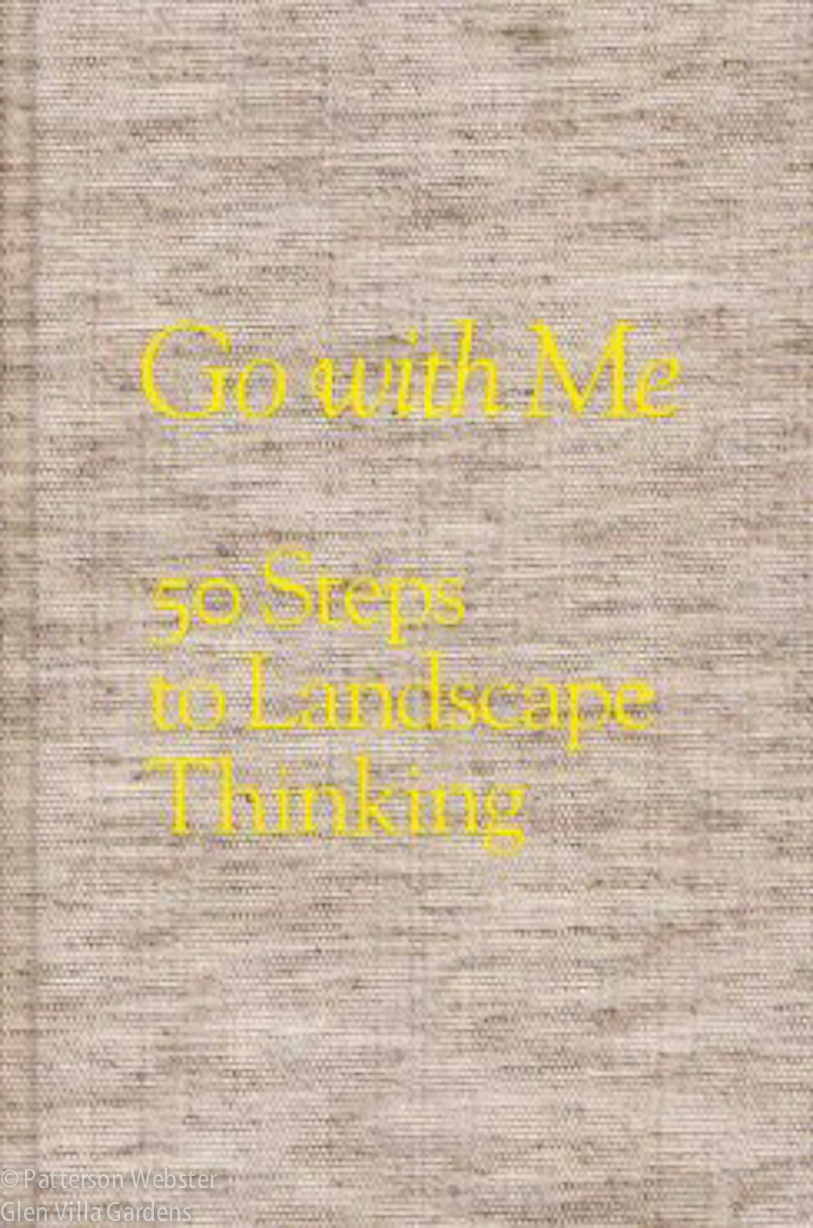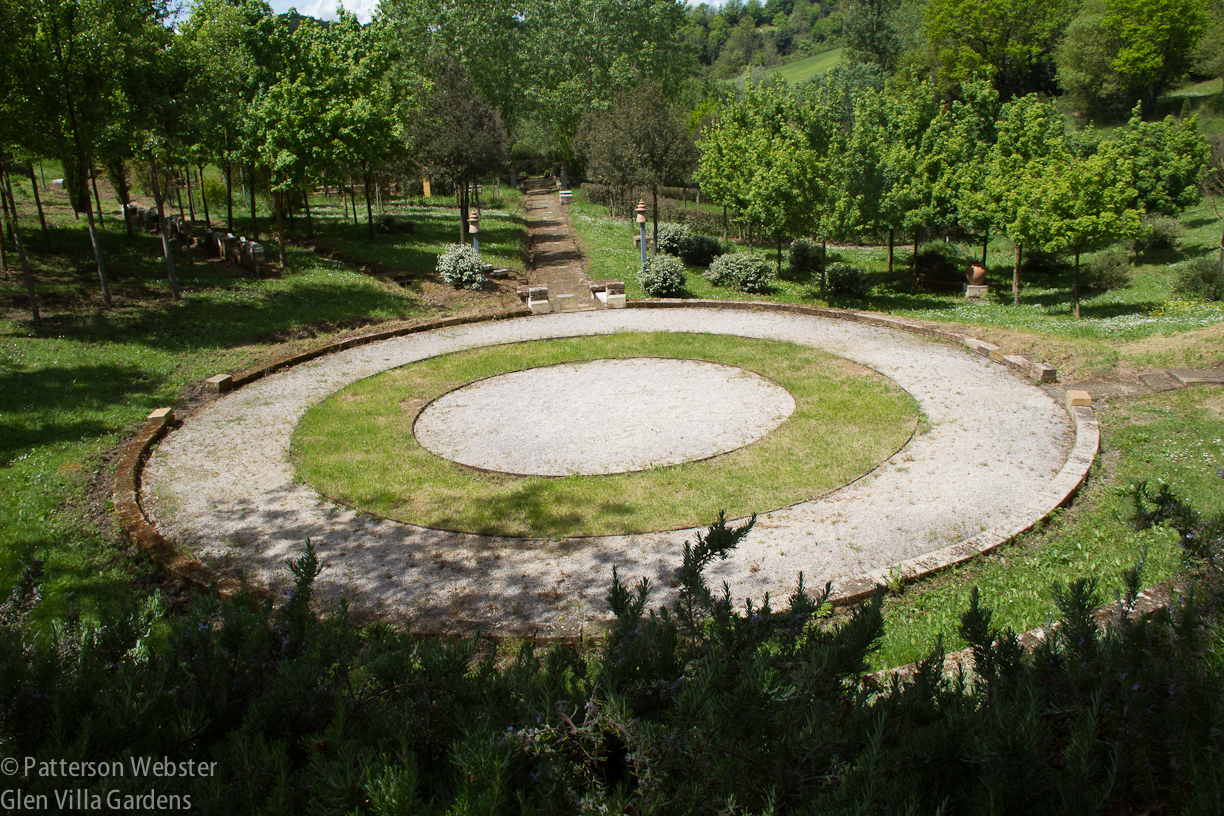Last year, Michael Gordon, a gardener in New Hampshire, wrote about a book called Go With Me: 50 Steps to Landscape Thinking. In his blog post he described how he used the book to enrich a tour he was leading through gardens in England.
His description intrigued me and I immediately ordered the book on line. No luck — it was out of print. I searched various used book outlets. Again, nothing. Finally, almost a year after beginning the search, I got hold of a copy.
Reading this tiny handbook made the long wait worthwhile.
The landscape architect Thomas Oles, author of Go With Me: 50 Steps to Landscape Thinking, describes the book as “a tool for … students, and all those who share their curiosity about landscape.”

This beautifully produced book contains a world of ideas along with images and quotations that make you think. And not just think in a casual sort of way.
The title, Go With Me, is a literal translation of the Latin term vademecum, used to describe a handbook you carry with you as a reference or guidebook, the sort of small book you put in your pocket and keep with you at all times. (Like my I-phone, you mean, a friend said when I described it. Thus do times change.) Divided into five sections — sensing, reasoning, showing, changing and testing — its fifty entries encourage the student or the general reader to probe their ideas and experiences of landscape more deeply.
What intrigued me in Michael Gordon’s blog post was the way he had used the book as he led his group through some English gardens I know quite well. At Stourhead, using Oles’s words, he encouraged participants to look up, “to lift your eyes above the horizon. Look into the branches above, then to the sky beyond. Crane your neck, hold it there until you swoon. Plunge upward, add this to your knowing of the place.”

I’m looking up at trees in an urban green space in Barcelona. You may recognize this photo: I use it on my website to introduce this blog. When I was in the square, I was doing as Oles advised, craning my neck and plunging upwards.
At other gardens, Gordon asked members of the group to draw, to transgress, to unpack the map. Ten exercises In ten days. Apparently, the group loved it.
This week, as I am leading a small group through gardens in Italy, I’ll be following Michael Gordon’s lead and using Oles’s Vademecum as my guide. I’m curious to see how these exercises in perception influence the way the group sees and experiences places that are rooted in history and ideas. Will they work as well in Italian gardens as they did in English ones? Some gardens lend themselves more easily to the idea than others. Some groups may be more enthusiastic. More amenable.

I’ll be asking participants to ‘unpack the map’ at this garden, Il Bosco della Ragnaia. And believe me, thee is a lot of unpacking to do.
Oles’s book focuses on landscape rather than garden, but the two share many similarities. Gardens, like landscapes, are not ways of seeing but ways of being: “the sum total of actions that people and groups undertake to build and shape their environment. … a set of social relationships unfolding and changing in time …”

The band of muscari that whips its way across the grass at Glen Villa was my first step in landscape thinking.
Social relationships are a big part of a garden tour — of any group that spends extended periods of time together. The relations of people travelling together also unfold and change over time. Sometimes in superficial ways, sometimes in ways more profound.
Two quotations that Oles included as chapter headings spoke strongly to me. The first, for the section on Reasoning, is from Arnold Schopenhauer. (I disregard the non gender-neutral language.)
“Every man takes the limits of his own field of vision for the limits of the world.”
Even more inducive of self-examination are these words from the section on Testing, from Anais Nin.
“We see things not as they are, but as we are.”
I am testing myself, and challenging the group to test themselves as well. As Oles writes, landscapes — and by extension, gardens — are “made and maintained by actors with varying degrees of power.” Which means, inevitably, that they have political and ethical ramifications. Visiting beautiful places, it is easy to ignore this, to admire only the shiny surface or to criticize only the weeds underfoot.
This experiment in landscape thinking may be a flop. It may be a huge success. I’m willing to take the risk. Because beneath the surface, the soil is richer.





Here is a link to it….http://issuu.com/bouwkunst/docs/thomas_oles-gowithme-50steps and yes those two quotations smacked me in the side of the head too, thank you!
Pretty stunning, aren’t they? I also liked the quote from Plato: “Those who tell the stories rule society.”
I found it for sale at Idea Books, a Dutch seller: http://www.ideabooks.nl/9789461400383-go-with-me-50-steps-to-landscape-thinking
This sounds intriguing. I can see why you had trouble getting it. Amazon shows only 1 copy available from any of their booksellers, and WorldCat indicates that only 20 libraries in the world own this book!
I hadn’t realized it was THAT difficult, Jean. I ordered at first through Amazon; the order was accepted but nothing arrived. I finally got it through an academic inter-library loan, from the University of Manitoba. I was surprised at the source, thankful to get the book.
Does sound an excellent book – I too looked on Amazon and found no copies available. But I’m amazed to see it’s available on that link from Robert Richardson! Must have a deeper look.
Having followed trees for a couple of years now, I am all too aware of the “looking up” aspect. Especially as both trees I have followed are very tall and with high canopies.
Love your pictures – especially the muscari – what a great planting!
All the best 🙂
I was also amazed to see the link from Robert. Haven’t had time to check it out yet but will eventually. The group enjoyed the 50 steps approach. One person said it was like being pushed to think outside the box. Even reading some of the text outloud led to lots of good discussions, about what makes a garden or a landscape really great and what makes a garden a garden. Looking up was definitely the most popular step.
The truly amazing thing is that the whole book is available free. I have now read it on my iPad. I’m still trying to digest it, though, as it is clearly aimed at designers or architects, but in a tangential way, not a “how to…” way.
As I am now in the habit of visiting and revisiting for the tree-following project I will share this quote from the book:
“Here I stand, not only with the sense
Of present pleasure, but with pleasing thoughts
That in this moment there is life and food
For future years.”
William Wordsworth
Thanks again for the fascinating recommendation 🙂
(I’m going to keep a lookout for 50 Steps….) That line of muscari is amazing! — and the circle in the photo above it. Thanks!